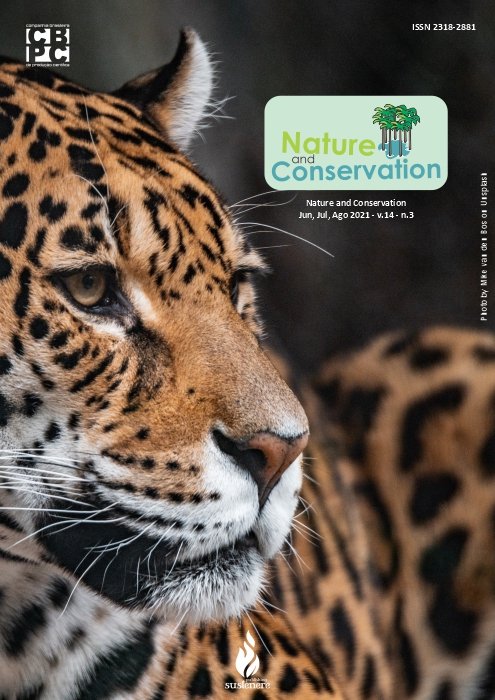Analysis of the interaction of a point source of launch of sanitary sewage with the quality of water in a lotic system, Rio do Peixe, Santa Catarina, Brazil
DOI:
https://doi.org/10.6008/CBPC2318-2881.2021.003.0008Keywords:
Domestic sewage, Rain drenage, Water PollutionAbstract
The irregular and silent release of domestic sewage into water systems has numerous consequences for water quality, such as increased concentrations of organic matter and nutrients, excessive proliferation of bacteria and reduced dissolved oxygen, thus making it difficult to treat the water supply. In this sense, the present work aims to evaluate the interaction of piped water with the water quality of Rio do Peixe, through four sampling points in the area of the municipality of Caçador/SC/BRAZIL. For the development of the work, four collection points were determined, being the collection point 01 upstream of the place of inflow of a rain drainage pipe (50m), point 02 place of inflow of the pipe, point 03 downstream of the pipe (50m) and point 04 downstream of the pipe (100m). The parameters analyzed were pH, temperature, electrical conductivity, turbidity, orthophosphate and total phosphorus. The results were compared to the water quality standards established in CONAMA Resolution 430/2011. With the results obtained, it was possible to observe the highest concentration of total phosphorus, orthophosphate, electrical conductivity at the collection point 02, which corresponds to the place of affluence of the rain drainage pipe with the Rio do Peixe. The average total phosphorus concentration in the water sample collected in point 02, of 6.17 mg/L, is well above the water quality standard established in legislation and demonstrates the occurrence of the discharge of domestic effluent in Rio do Peixe. Therefore, monitoring the quality of the water in Rio do Peixe is extremely important to monitor the point and diffuse sources of sewage and industrial effluents.
Downloads
Downloads
Published
Issue
Section
License
Copyright (c) 2021 Nature and Conservation

This work is licensed under a Creative Commons Attribution-NonCommercial-NoDerivatives 4.0 International License.
The CBPC - Companhia Brasileira de Produção Científica (Brazil CNPJ: 11.221.422/0001-03) the material rights of the published works. The rights relate to the publication of the work anywhere in the world, including rights to renewals, expansions and dissemination of the contribution, as well as other subsidiary rights. All electronically published works may subsequently be published in printed collections under the coordination of this company and / or its partners. The authors preserve the copyright, but are not allowed to publish the contribution in another medium, printed or digital, in Portuguese or in translation.









